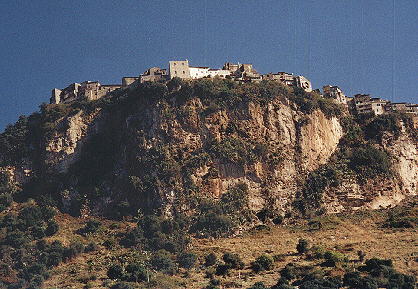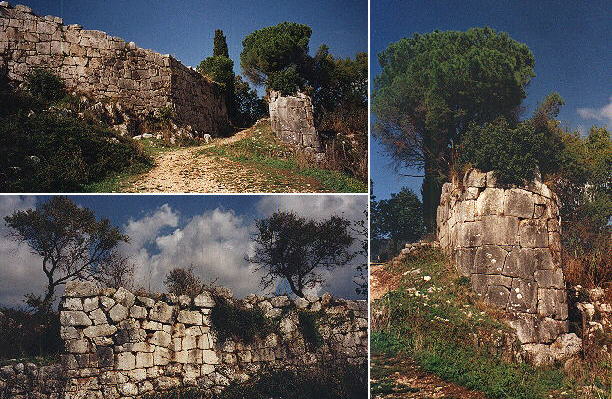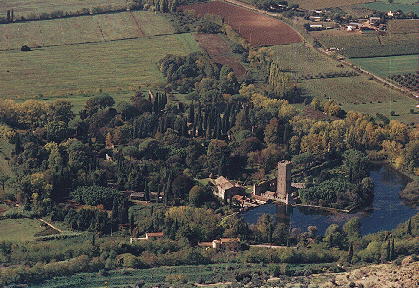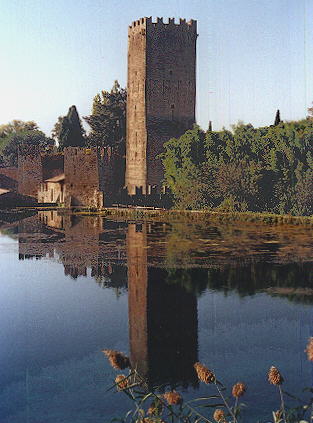  Ferdinand Gregorovius' Walks - Norma
Gregorovius and his friend Muller, left Segni and
with the help of a local guide they rode through the forest which (still) covers
the Volsci Mountains to reach on the other side of them the medieval town of Norma.
Gregorovius was very impressed by this forest, which reminded him of his native German
forests. All of a sudden the riders found themselves out of the forest and saw the marshy
plain at the foot of the mountain and beyond it the Tyrrenian sea and in the far distance the island of Ponza
and Monte Circeo which looked like an island. Gregorovius'eye was attracted to Torre Astura, where the fate of Conradin of Swabia, the last of the Hohenstaufen, was decided.
The town of Norma lies on a steep slope and the inn where Gregorovius stayed was right on the precipice to the point that he was seized by dizziness. This site was chosen by the inhabitants of nearby Norba, because it offered greater security. Norba was a Latin colony built on the same mountain of Norma but on a sort of plateau. Its walls were 1 and 1/2 M in circumference and inside them there was an acropolis with temples. The walls were built in the polygonal style common to many towns in the area and the main gate was reinforced by a sort of tower.
From the window of his room in the inn Gregorovius saw the ivy-clad remains of the medieval town of Ninfa, surrounded by a marsh which had caused its abandonment (the Pontine Marshes were fully reclaimed in the 1930s). With some exaggeration Gregorovius called Ninfa the Medieval Pompei.
Gregorovius visited Ninfa at sunset and waited for the moonlight to make him feel immersed in a fairy tale.
Ninfa was a fief of the Frangipane and then of the Caetani who erected a small castle and the walls which surround the little town. A small pond adds to the spell of the site. From Norma Gregorovius and his friend moved towards Cori by following a narrow bridle-path over the mountains. Introductory page on Ferdinand Gregorovius Valmontone Segni Cori Other walks: The Roman Campagna: Palestrina Genazzano Paliano Anagni The Ernici Mountains: Ferentino Alatri On the Latin shores: Anzio Nettuno and Torre Astura Circe's Cape: Terracina San Felice The Orsini Castle in Bracciano Subiaco, the oldest Benedictine monastery See my Home Page on Baroque Rome or my Home Page on Rome in the footsteps of an XVIIIth century traveller. |
All images © 1999 - 2003 by Roberto Piperno. Write to romapip@quipo.it



